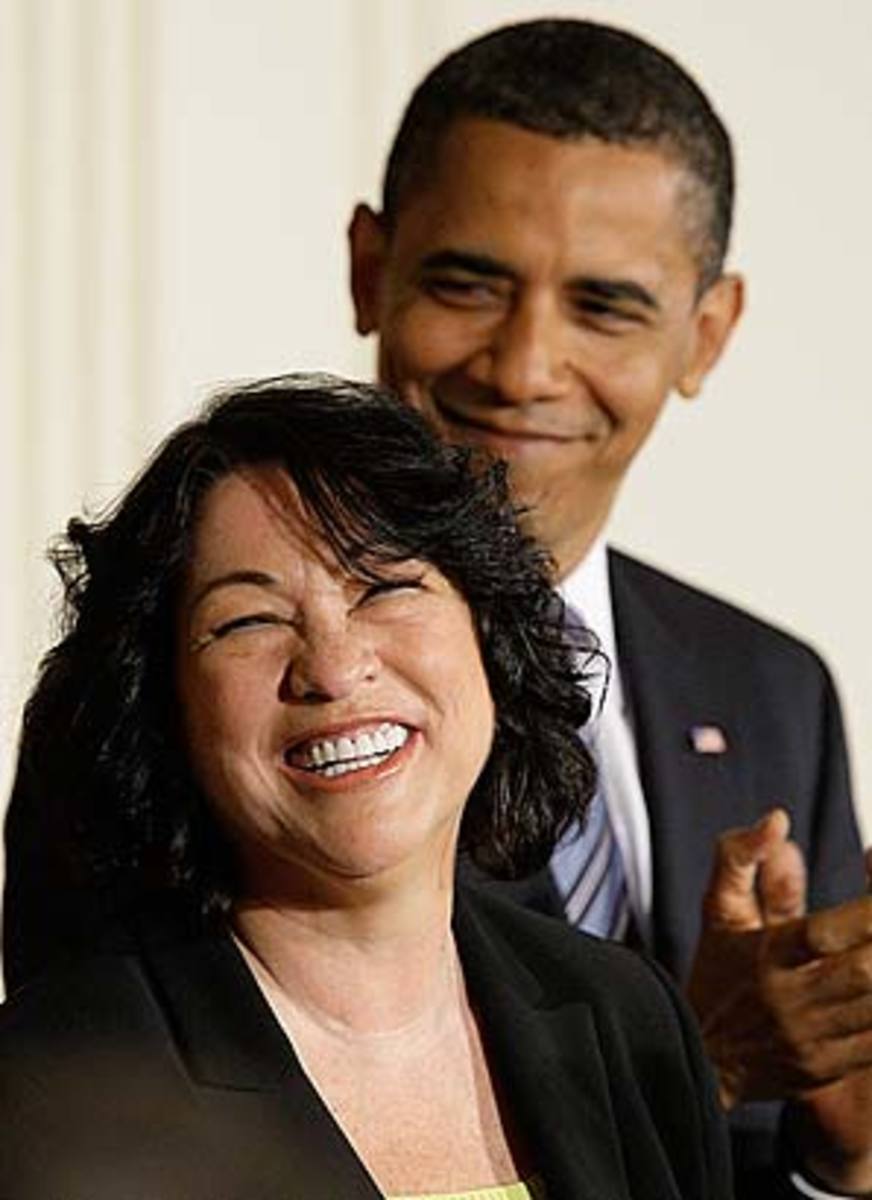Supreme Court nominee Sonia Sotomayor well known in sports


Despite sterling credentials as a graduate of Princeton and Yale Law School and a judge on the U.S. District Court and later the U.S. Court of Appeals, Sonia Sotomayor -- whom President Barack Obama announced Tuesday morning as his nominee for the United States Supreme Court -- is a relatively unknown justice to the nation at large. But to sports fans, she's already well known for having played a major role in two of the most highly publicized intersections of sports and the law in recent memory: the eight-month strike by major league baseball players from 1994-95 and the challenge by Ohio State running back Maurice Clarett to the NFL's age limit in 2004. In both of those rulings, Sotomayor stood firmly behind labor unions and a support for the collective-bargaining process.
In March 1995, Sotomayor, then serving as a District Court judge, issued an injunction requested by the National Labor Relations Board ordering baseball owners to restore bidding on free agents, a resumption of salary arbitration and the anti-collusion rules which were a part of the collective bargaining agreement that had recently expired. As President Obama noted in his remarks introducing Sotomayor as his nominee, she deliberated for just 15 minutes before making a decision that, in the President's words, "saved baseball."
Replacement players were scheduled to begin the season two days after Sotomayor's ruling, but once she issued the injunction, the MLBPA voted to end the strike. When the owners didn't have the votes necessary to lockout the players, the major league players returned to their teams. Spring training camps opened shortly thereafter and Opening Day was played in late April, the beginning of an abbreviated 144-game season.
To the owners, Sotomayor's ruling was, according to one replacement player, "a fastball under the chin and their knees buckled."
The owners appellate brief stated that, "Major league baseball will likely suffer its second consecutive year of no playoffs, no World Series and, therefore, irreparable damage to the credibility of the institution in the eyes of its fans, advertisers, rights holders and other sources of economic lifeblood. The damage caused by another disrupted season will likely drive some clubs out of business ... their teams would be lost for good."
That doomsday scenario not only failed to materialize, but baseball instead embarked on its longest sustained period of labor peace in over 30 years, while the game set new records for both attendance and revenue. No teams went out of business, but two expansion teams were added, and the World Series has been played as scheduled every year.
By 2004, Sotomayor had moved onto the U.S. Court of Appeals for the Second District when she ruled on a case involving the NFL's age minimum. Maurice Clarett, a star running back at Ohio State, and Mike Williams, a wide receiver from USC, had sued to be allowed into the NFL Draft before they had been out of high school for three years, as mandated by the NFL's rules. A lower court had ruled that the age-limit should be overturned, but the appeals court granted the league's request for a stay of the ruling. During the hearing, Sotomayor asked Clarett's attorney, Alan Millstein, why players who were already a part of the NFL Players' Association should risk losing their jobs to non-members. "Those 1,500 players want to protect themselves," she said. "That's what unions do: protect those in the union from those not in the union."
The NFL age-minimum remains in place.
